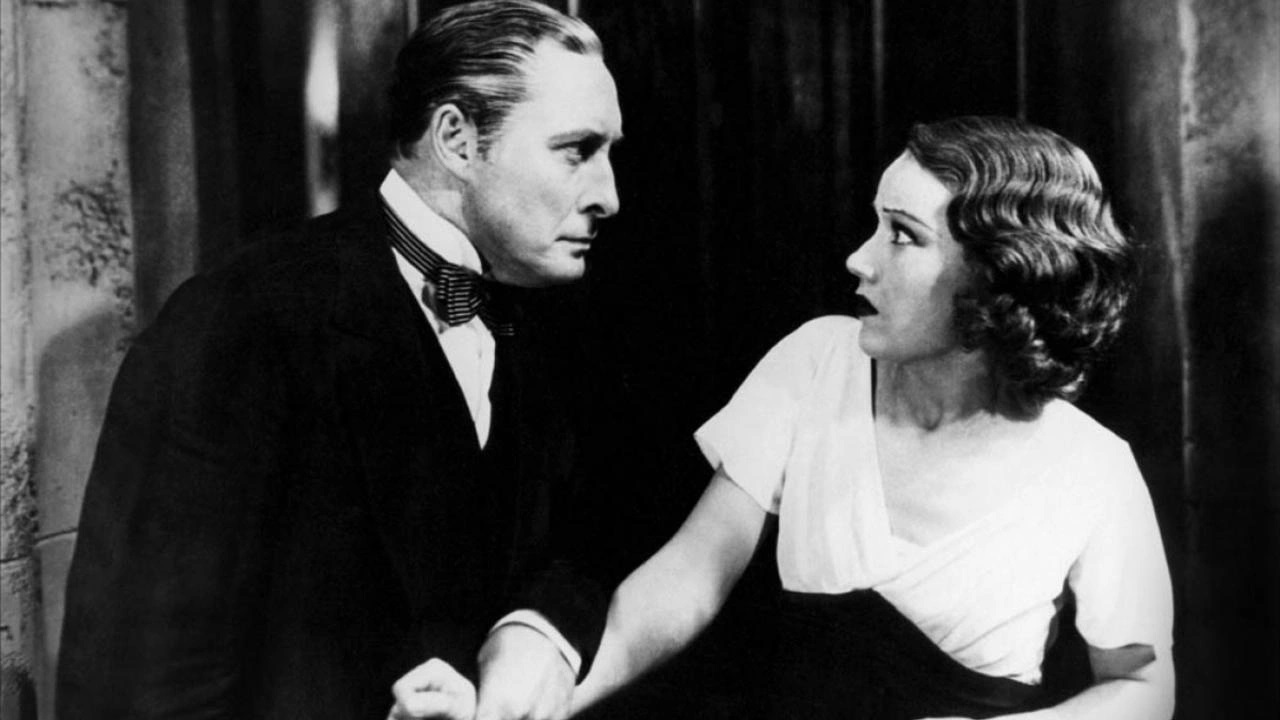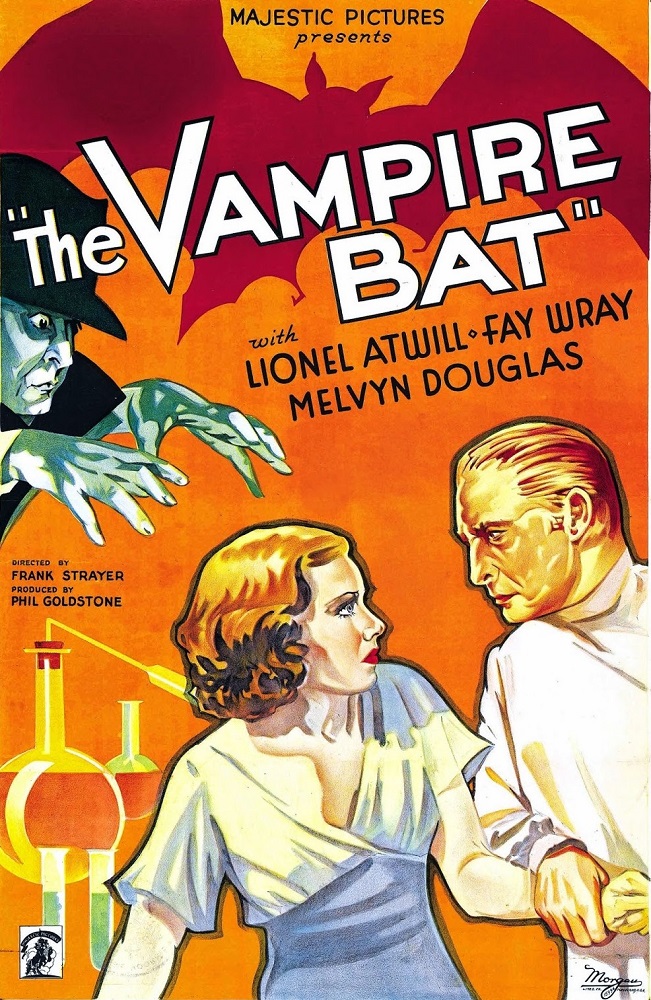Crew
Director – Frank Strayer, Screenplay – Edward T. Lowe, Producer – Phil Goldstone, Photography (b&w) – Ira Morgan, Art Direction – Frank Hall. Production Company – Majestic Pictures.
Cast
Lionel Atwill (Dr Otto von Niemann), Fay Wray (Ruth Bertin), Melvyn Douglas (Karl Brettschneider), Maude Eburne (Gussie Schnappmann), Dwight Frye (Herman Gleib), Robert Frazer (Emil), George E. Stone (Kringen), Lionel Belmore (Burgermeister Gustave Schoen), Stella Adams (Georgianna)
Plot
The German village of Kleinschloss is plagued by a series of killings where victims are found drained of their blood. Huge vampire bats are seen nearby and are believed responsible. Suspicion falls on the simpleton Herman Gleib who has an unnatural liking for bats. After Herman is killed by a lynch mob, Dr Karl Brettschneider and his girlfriend Ruth Bertin find evidence that the person responsible might be scientist Dr Otto von Niemann, who is engaged in a series of sinister experiments.
The Vampire Bat is an interesting film from the early days of the Golden Age of Horror (1931-1939). Though a minor entry, it is an interesting locus of the themes that had been popularised around the time. It features several of the famous names in horror of the era – in particular, Lionel Atwill and Fay Wray.
Lionel Atwill became one of the best known villains and mad scientists of the day with performances in films like Murders in the Zoo (1933), Man Made Monster (1941) and particularly as the wooden-armed inspector in Son of Frankenstein (1939), while Fay Wray of course became the lead in King Kong (1933). The two had appeared together the year before in the classic mad scientist film Doctor X (1932) and the same year as The Vampire Bat also appeared in another classic of the era Mystery of the Wax Museum (1933).
The Vampire Bat gives the impression of having been hastily slung together to capitalise on the dual successes of the two films that sparked off the Golden Age – the Bela Lugosi Dracula (1931) and the Boris Karloff Frankenstein (1931). The Vampire Bat is clearly trying to be another Dracula of sorts in that it is centred around a series of vampire bat killings and of course features Dwight Frye doing a memorable variant on the crazed Renfield role he played in Dracula. It also copies the Mittel European setting and Expressionist laboratory designs from Frankenstein – indeed the film was shot on the same European village sets used in Frankenstein – as well as features Lionel Atwill as a mad scientist in the Colin Clive mold.

On the other hand, the attempts to combine the Vampire Film and the Mad Scientist film do not easily mesh. The vampire bat killings are soon passed over in favour of the mad scientist story – in the era’s penchant for the rationalising of all supernatural elements, the bats turn out to be part of the mad scientist’s scheme. Although it is never very clearly explained what Lionel Atwill’s mad scientist is up to, or even for that matter how it is that he manages to mentally control people. Nor does the attempt to mislead us at the outset that the killings might be being conducted by Dwight Frye convince very much – Lionel Atwill’s imperious glares whenever he turns up give the game away far too obviously.
Despite the ramshackle nature of the film’s conception, director Frank Strayer does a good job of making the atmosphere work. The scenes in the lab and particularly where the lynch mob pursues Dwight Frye into the caves work through some fine lighting effects. Lionel Atwill is on top form, giving a wild-eyed performance – Strayer does a marvellous job in the eerily lit scenes in the lab with him mentally controlling Robert Frazer, or with Fay Wray accidentally spotting him and the images of Frazer creeping across the rooftops and into a victim’s bedroom. There is probably a little too much comic relief given over to Maude Eburne’s maid and her hypochondria as she drinks potions and attempts to pronounce medical phrases, otherwise The Vampire Bat is a likeable outing.
Director Frank Strayer made a number of other genre outings during this era, including the Old Dark House films The Monster Walks (1932) and The Ghost Walks (1934); Condemned to Live (1935), which had an almost identical mad scientist/vampire plot; and Death from a Distance (1936), a murder mystery with an SF twist. Most of these are cheap B programmers. Strayer is best known for the series of Blondie films made during the late 1930s/40s based on the popular syndicated comic-strip.


